The nose is the first organ of the cat’s respiratory system. Its role is to take in (inhale) oxygen and push out (exhale) carbon dioxide. As air enters the nasal cavity, debris is filtered and the air warmed and moistened. In addition to breathing, the nose is an early line of defence against inhaled pathogens. Mucous membranes (nasal mucosa) line the inside of the nose, which is composed of epilitheum, basement membrane and lamina propea. The respiratory epilitheum contains fine hairs (cilia) and mucus producing goblet cells. Mucus traps pathogens that enter the nasal passage, killing or trapping them.
Cat nose anatomy
- External nares (nostrils) which are separated by the bony septum
- Nasal planum (where the nose leather/nostrils are located)
- Philtrum, the line that runs from down nasal planum and between the lips
- Nasal cavity and the turbinates are thin, scroll-like bones within the nasal cavity that filter out dust and warm and humidify incoming air.
The sense of smell (olfaction) is already developed when the kitten is born. Each kitten can distinguish not only the smell of their mother but also locate the nipple by scent. Most kittens have a preferred nipple they will nurse.
Smell is essential for your cat’s appetite; a cat who cannot smell will not eat. Upper respiratory infections which tend to block the nose can cause your cat to lose his sense of smell. It is important to keep the nose clean of discharge and if the cat is off its food, gently warm it, which makes the smell somewhat stronger.
Jacobson’s organ (also known as the vomeronasal organ) is an accessory olfactory organ located between the roof of the mouth and the nose. The incisive papilla is a small bump located behind the cat’s incisors. Receptor cells connect the Jacobson’s organ to the region of the brain associated with feeding, social and sexual behaviours. Jacobson’s organ is primarily used for analysing pheromones from other cats. Pet owners may notice that when their cat encounters a particular scent, he or she opens their mouth, curls back their upper lip and inhales. This unusual reaction is known as the flehmen response which facilitates the transfer of pheromones and other scents into the Jacobson’s organ.
Cat nose shapes
The shape of a cat’s nose varies, especially with purebred cats, and can range in length, width, and straightness. When looking at the cat in profile (side-on), nose shapes are more apparent.
Most mixed breed cats have a relatively straight nose which is not extreme in length, width or shape. Long, straight noses are found on Siamese, Oriental and the Russian Blue while the Burmese have a shorter nose with a nose break, the Birman and Cornish Rex have a Roman nose, while the Persian and Exotic cats have the most extreme nose which is short with a prominent break that is centered between the eyes.
Roman nose: The Roman nose is slightly convex (curved outward) in shape and profile.
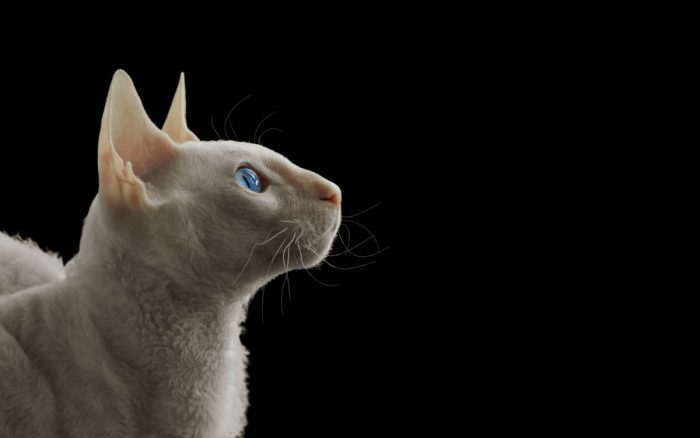
Snub nose: The snub nose is extremely short with a prominent break (dip) between the eyes.
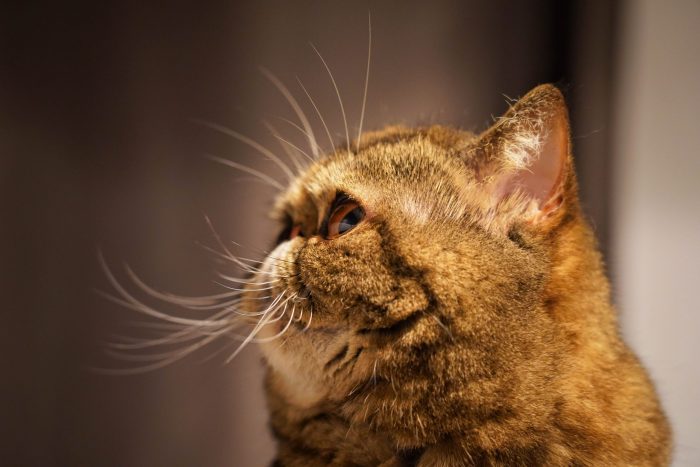
Straight: The nose is straight with no convex or concave curves. The flat skull gives the appearance of a long straight line down to the nostrils.
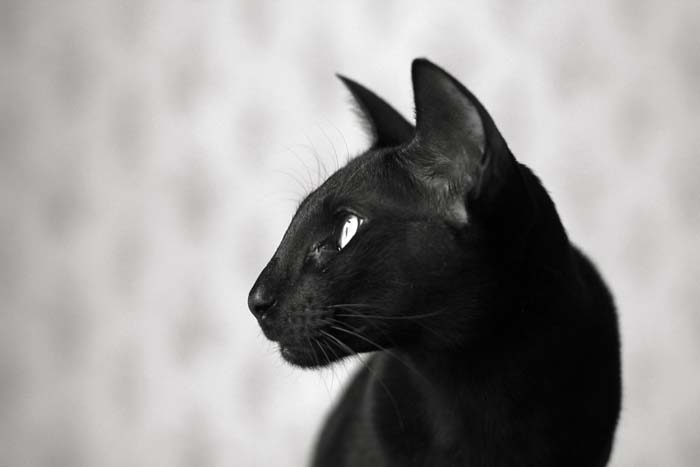
Nose break: There is a defined dip between the forehead and the nose.
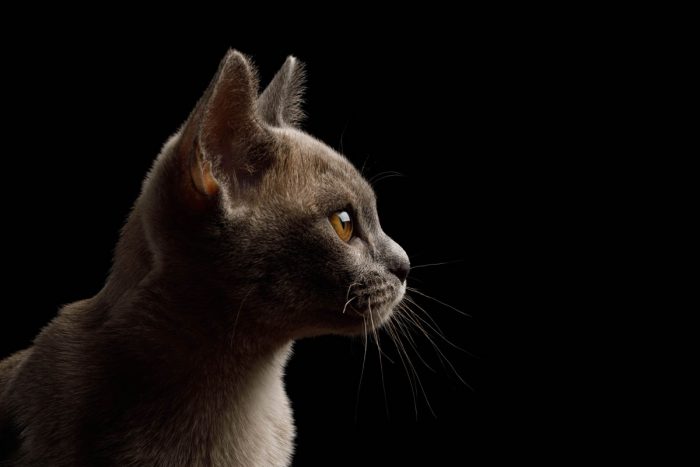
Your cat’s sense of smell
The cat’s sense of smell (known as olfaction) is considerably better than that of humans.
| Cat | Dog | Human | |
| Olfactory epithelium | 20 cm2 | 15 – 150 cm2 | 2 – 4 cm2 |
| Number of scent receptors | 200 million | 150 million | 5 million |
Scent plays several roles for the cat:
- Cats also use scent glands to mark territory
- A female in heat will give off odours to let males in the area know she is receptive to mating
- Enhances the sense of taste
- Serves to warn the cat if food is off
Nasal discharge
Cats are prone to nasal discharge. It may be thin and watery, thick and mucoid or bloody. There are several possible causes which may include:
- Upper respiratory infection
- Bacterial infection
- Fungal infection
- Nasal tumours
- Head trauma
- Foreign objects in the nasal cavity
- Allergies
- Cleft palate
- Cheyletiellosis
- Tooth root abscesses
- Pneumonia
Examining the cat’s nose
Sometimes it will be necessary for your veterinarian to examine your cat’s nose internally. Examination of the nose requires the use of a fine tube known as an endoscope which has a light and a video camera. Due to the invasive nature of the test, general anaesthesia is necessary.
Your cat’s nose leather
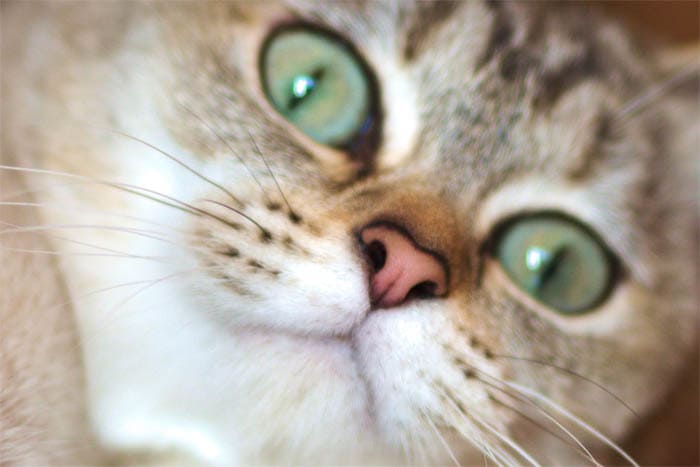
The nose leather is the naked skin around the nostrils; the cat’s nose leather is as unique as our fingerprint. The colour of the nose leather depends on your cat’s colour and can be pink, brick red, black, blue, lavender, chocolate or brown. The nose leather has a dark outline in some breeds, such as the Chinchilla and Burmilla. As you can see in the image at the beginning of this article, some cats even have freckles on their nose.
Frequently asked questions
Should a cat’s nose be wet or dry?
A cat’s nose can be wet or dry depending on many factors such as humidity, temperature etc. A dry nose can be an indicator your cat isn’t well and may be dehydrated or running a fever, but it’s not a definitive diagnosis. A perfectly healthy cat may also have a dry nose under the right conditions (low humidity, for example). If you are worried, your cat’s nose is dry, and he may be sick, look for other signs such as loss of appetite, lethargy, etc., which are more accurate indicators.
What smells don’t cats like?
Cats don’t like strong odours, which is why cat carers should avoid cleaning products with strong scents in their litter trays. The residual smell can put cats off using the trays.
Cats have a strong dislike of the following smells:
- Citrus
- Mint
- Lavender
- Eucalyptus
- Tee tree
What is a cat’s nose called?
The nose is known as the rhinarium.
My cat’s nose suddenly has a new bump or scab, what could it be?
Read our article: Cat’s Nose With New Bump, Lump or Scab (including pictures & vet advice)

